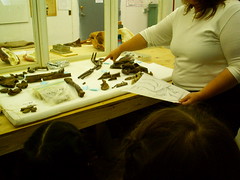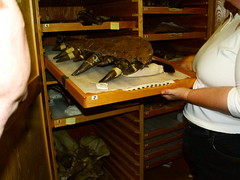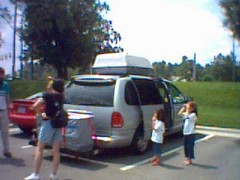... engineering school continues to be a dreary and stressful affair. Typical curricula still struggle to include 'all that is important,' and as a result they are overstuffed and unattractive. More study subjects are likely to be crammed into the heavy course list; fewer obsolete old favorites are likely to be retired. The post-university workplace is not much better. Compared with the fields of education or health care, the ethos of the engineering workplace -- long hours, high stress, competitiveness, a 'one size fits all' mind-set -- is uninviting. This is especially true for women, who still carry child-rearing duties in our society much more heavily than men.The author, Moshe Kam, has really pegged the field. Computer science disproportionately attracts students who are pre-disposed to hard, even excessively hard, work. First-generation college students and immigrants have a very clear idea of what life will be like without a college degree that translates into a well-paying job. They're not as willing to take the risk of pursuing a course of study that may not "pay off". I know that's the way I thought of things when I was an undergrad: failure was not an option, nor was the prospect of what I perceived (rightly or not) to be the potential low-paying positions associated with other degrees. This fed back to engineering students' psychology: that students in other majors were either lazy or lacked the "mental firepower" to be engineers. We never thought that maybe they had considered the option and decided that life was just too short and that an engineering career wasn't worth the amount of effort demanded. In other words, the problem isn't with potential students, the problem lies with the computing profession.The lackluster engineering education experience and the often unaccommodating (and increasingly unstable) engineering workplace have affected men as well as women. During the last 20 years, enrollment in U.S. engineering programs has lagged significantly behind the overall growth in college and university enrollments. There were demographic changes as well-engineering students in the United States are increasingly recruited from communities that struggle to lift themselves into the middle class (most notably, first-generation college attendees and first- and second-generation immigrants).
Kam contrasts engineering with fields such as law or medicine, and how those fields have attracted women by offering a more rewarding, human, and humane educational and career environment. Is part of the problem that these other professional programs are graduate programs, while computer science/engineering is undergraduate?
When we also tell them [women] (as we do) that in order to be an engineer one must be 'a fan of science and math' and 'juggle projects, lab exercises, and reading assignments' they take one last look at us and flee... the popular CollegeBoard Web site describes several college study majors. The lawyer-to-be will 'engage in intense discussion of thorny legal problems.' The computer engineer? She will 'spend lots of time solving tough math problems.' Take your pick.Young women are not dumb. The problem is not that they need to change. The problem is that we need to change. In the view of many young people, women especially, engineering represents a collection of majors that promise hard work during college, often in a tense and demanding atmosphere, with the prospect of ultimately gaining a stressful job of questionable permanence. What will help us most is not to say that this ain't so, but to make it so that it ain't.
Topics: careers, computer science.

























